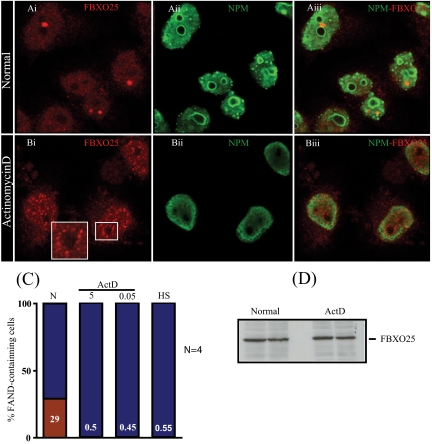Figure 8.
Inhibition of RNA polymerases using actinomycin D disrupts FBXO25-associated nuclear domains. Confocal microscopy of labeled FBXO25 in untreated and ActD-treated (5 μg/ml for 2 h) HeLa cells are shown. Without ActD treatment, FANDs were found in the nucleoplasm (Ai–Aiii). In the presence of ActD, the majority of endogenous (Bi–Biii) FANDs disappeared (B). Note that FBXO25 occurs in perinucleolar structures in cells treated with ActD (Bi, inset). (C) Proportion of cells containing FANDs was estimated. After treatment with ActD, the proportion of cells containing FANDs (red) significantly differs from the control population. Four separate experiments were performed, and ∼100 cells were analyzed for drug treatment. CR, untreated; 0.5, ActD, 0.5 μg/ml; ActD 0.05, 0.05 μg/ml; and HS, heat shock. (D) Western blotting analysis of FBXO25 from protein extracts of cells at time points as shown in A. ActD does not alter FBXO25 subcellular levels.

